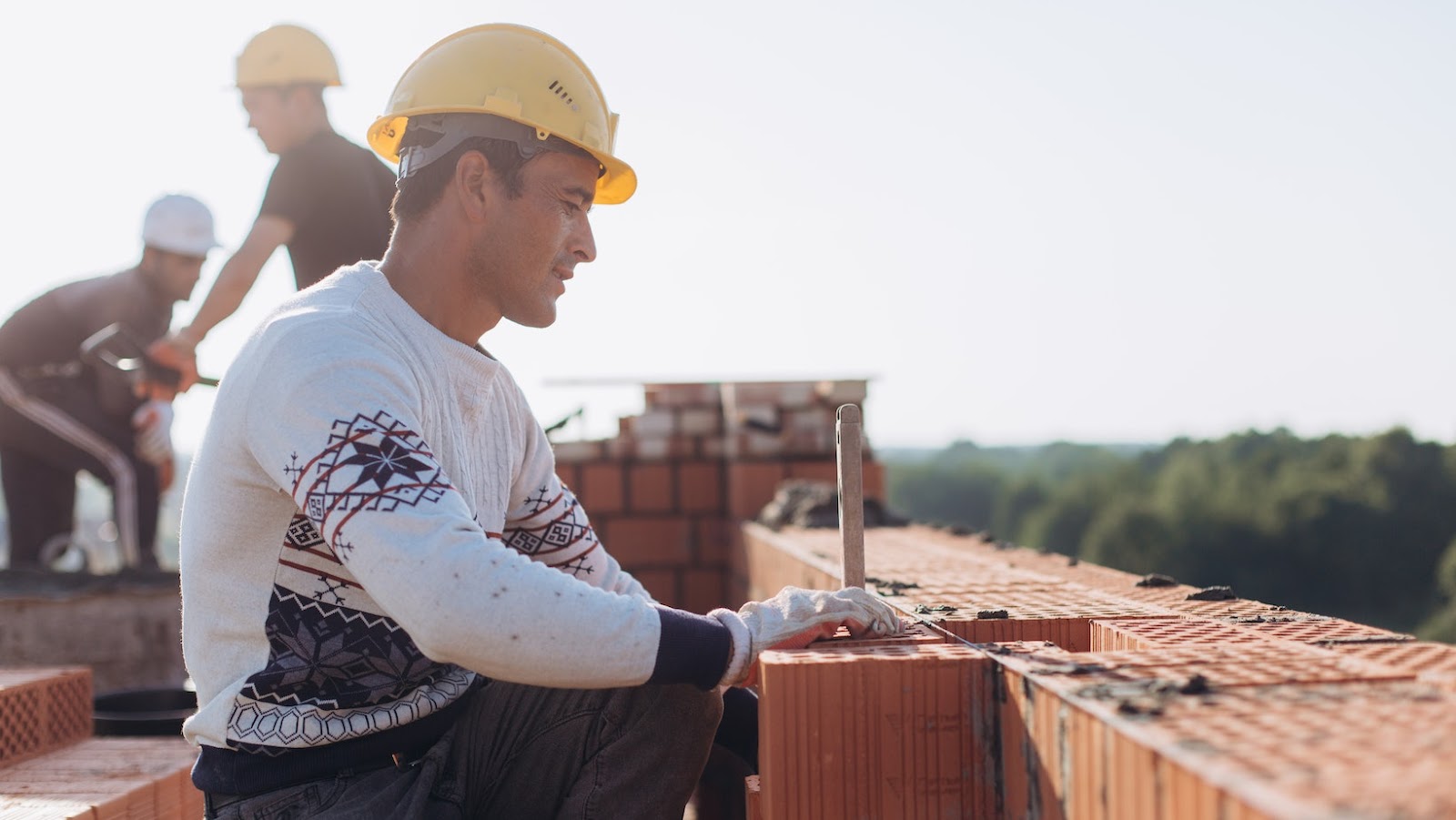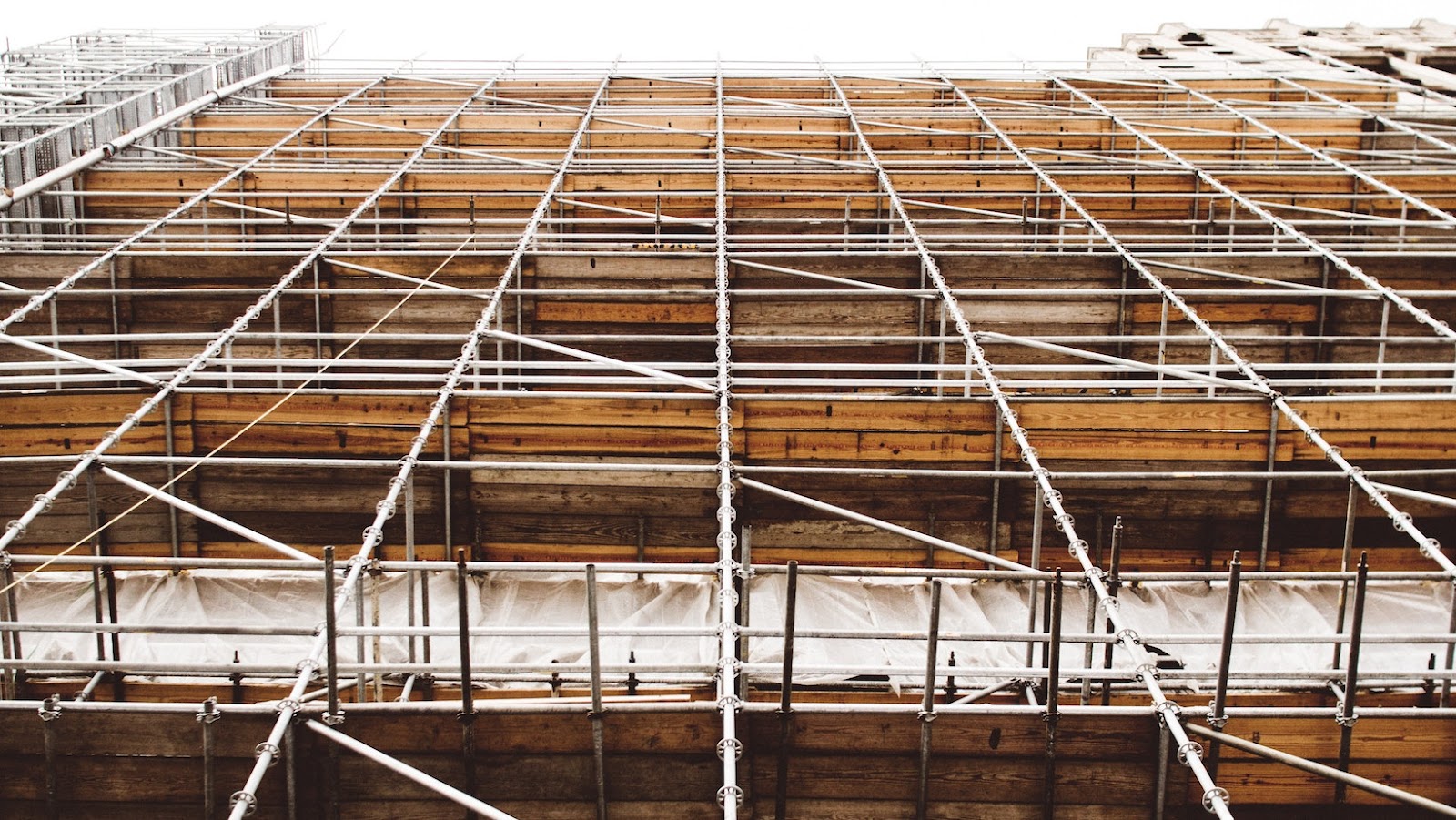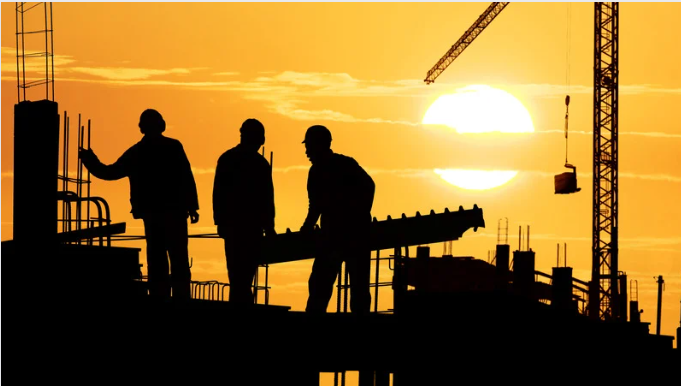Understanding Masonry Construction
Masonry construction is an important form of building and engineering, as it provides a sturdy and dependable foundation for many structures. In order to understand masonry construction, it is important to learn about the various materials and tools used and the various rows or layers of stone, brick, or block which are referred to as “courses”.
In this article we will discuss the basics of masonry construction, and explore what courses are and how they are formed.
What is Masonry Construction?
Masonry construction is a building technique that utilizes materials such as stone, brick, and concrete blocks to create structurally sound and aesthetically pleasing structures. The rows or layers of materials used in masonry construction are called courses.
Here’s what you need to know about masonry construction:
- Masonry materials are highly durable, fire-resistant, and low-maintenance.
- Masonry construction can be used for both interior and exterior applications, including walls, chimneys, and fireplaces.
- Proper installation of masonry materials is critical to ensuring the structural stability of the building.
- Courses can be laid in a variety of patterns, including running bond, stack bond, and Flemish bond, among others.
Understanding basic masonry terminology and techniques can help ensure that your masonry project is successful and long-lasting.
Importance and Benefits of Masonry Construction
Masonry construction is a popular building technique that has been used for centuries. It is known for its durability, longevity, and versatility. There are several key benefits of masonry construction that make it a popular choice for homeowners and builders alike.
Some of the key benefits include:
- Durability: Masonry materials, such as stone or brick, are known for their strength and durability. They are resistant to fire, moisture, and weathering, making them a long-lasting building material.
- Low maintenance: Masonry construction is relatively low-maintenance compared to other building materials. Repairs are infrequent and simple, and the material does not require regular cleaning or upkeep.
- Insulation: Masonry materials are excellent insulators, providing soundproofing and energy efficiency benefits to buildings.
The rows or layers of stone, brick or block in masonry construction are called courses. The way the courses of masonry material are laid out determines the pattern of the resulting surface.
Pro tip: Masonry construction can also add value to your property and improve its curb appeal. The material is versatile and can be used in a variety of architectural styles to achieve a timeless and classic look.
The Different Materials Used in Masonry Construction
In masonry construction, the rows or layers of stone, brick, or block are called courses. Understanding the materials used in masonry construction is essential to ensure the durability and longevity of your project.
Here are the different materials commonly used in masonry construction:
- Brick: Made of clay, bricks come in various sizes, colors, and textures, making them a versatile choice for construction.
- Stone: Stones can be used in their natural form or cut into specific shapes and sizes.
- Block: Concrete blocks are durable, low-cost, and fire-resistant, making them a popular choice for construction.
- Mortar: A mixture of sand, cement, and water, mortar is used to bind the masonry materials together.
- Reinforcements: Materials like steel rods and bars are used to reinforce masonry walls to withstand external forces like wind and earthquakes.
What are the Rows or Layers of Stone, Brick, or Block Called?
Masonry construction is a type of building that has been around for centuries. It is composed of different materials such as stone, brick, or block which are interlocked with each other to form a strong, durable structure. The key component of any masonry construction is the rows or layers of stone, brick, or block interlocked with mortar. These layers are referred to as “courses”.
A course refers to a horizontal layer of building material that is level and even. Courses are typically stacked in a staggered pattern to improve the stability and overall strength of the masonry structure. Each course should be level and even to maintain structural integrity and prevent the buildup of stress in any one area of the construction. Whether you are constructing a wall, a chimney, or any structure with masonry construction, courses are the crucial building blocks on which a stable and aesthetically pleasing structure is constructed.
Pro Tip: When constructing with masonry, be sure to use high-quality materials and take the time to stack your courses carefully and methodically. This will ensure a structurally sound and visually pleasing outcome.

Types of Masonry Units
Masonry units are the building blocks used in masonry construction, which include stone, brick or concrete blocks. Here are the different types of Masonry units:
- Brick: Bricks are rectangular units made of clay, shale, or concrete materials that are usually used for building walls, arches, and chimneys. They come in various sizes, colors, and textures, making them versatile for different types of structures.
- Stone: Natural stone is cut from quarries and available in different shapes, sizes, and colors. It is durable, weather-resistant, and adds a rustic and aesthetic feel to building designs. Common types of natural stones include limestone, marble, slate, granite, and sandstone.
- Concrete Blocks: Concrete blocks are made from cement, water, and aggregates and are available in various sizes, shapes, and densities. These units are widely used for building foundations, walls, retaining walls, and fire pits.
Pro Tip: Always choose the right type of masonry unit based on your project requirements, location, and budget to ensure durability, longevity, and aesthetics.
Mortar – The Binding Material
Mortar is a mixture of sand, water, and cement that binds bricks, stone or block together to create a sturdy structure. It fills gaps and adds strength to the construction. The type of mortar used depends on the materials used, the structure being built, and the environment it is being built-in. With proper mortar application, one can assure a durable and aesthetically appealing structure.
The quality of the material being used to build is paramount to the longevity of the structure. The durability entirely depends on how well the masonry structure has been constructed. Therefore, with the right knowledge of mixing and using mortar, one can produce a reliable masonry structure with ease.
Masonry Construction Techniques
Masonry construction is a popular choice for construction, as it is durable and provides great insulation. It involves stacking rows or layers of stone, brick, or block and binding them together with mortar. This technique is used in all kinds of structures, from single-family homes to office buildings. The rows of masonry structures are known as courses, and they are the basis of any masonry construction project.
In this article, we will explore the different techniques used in masonry construction, as well as the tools and materials necessary to complete the masonry project successfully.
Bricklaying Techniques in Masonry Construction
In masonry construction, the rows or layers of stone, brick, or block are called courses. Understanding bricklaying techniques is crucial in masonry construction to ensure that the courses are laid correctly and the wall is stable and structurally sound. Here are some important bricklaying techniques to keep in mind:
- Site preparation: Before beginning any construction work, the site must be properly prepared. The ground should be leveled, and the foundation should be sound and level.
- Mortar preparation: Accurately preparing the mortar is essential to ensure that the wall is stable. The mortar must have the right consistency and contain the right ingredients.
- Cutting bricks: To fit bricks accurately into a pattern, it is sometimes necessary to cut them. Use a chisel and hammer to make precise cuts on the bricks.
- Laying bricks: A trowel is used to apply the mortar to the base surface, and then the brick is placed on top. Accurately spacing and aligning the bricks is important to ensure a stable and aesthetically pleasing wall.
Pro Tip: Regularly cleaning your bricklaying tools will make them last longer and perform better.
Stone Masonry: Techniques and Tools
- Dry Stone Masonry – involves using only stones to construct a structure without any mortar, relies solely on the weight of the stone to create a stable and durable structure.
- Rubble Masonry- uses stones that are rough and uneven in size and shape, which are laid relatively flat with wide joints between them.
- Ashlar Masonry – requires carefully cut and dressed stone blocks that are leveled, smoothed and laid in even courses with thin joints between them.
The tools used for these techniques vary from traditional hammer and chisel, to modern-day tools like a masonry saw or a diamond-tip blade. Masonry construction requires precision and attention to detail to create a sturdy and visually appealing structure.
Block Masonry: Techniques and Practices
Proper knowledge of block masonry techniques and practices is essential for the strength and durability of the structure. Masonry construction is a highly skilled profession that involves a thorough understanding of materials and the necessary craftsmanship.
Here are some basic techniques used in block masonry construction:
- Laying out the pattern: This involves setting up the pattern, marking the lines, and making sure the walls are straight.
- Mixing and applying mortar: The mortar mix should be consistent in texture and thickness. It is then applied evenly to each block or brick.
- Laying the blocks or bricks: Proper alignment and leveling are necessary between each course for stability and strength.
- Cutting and fitting: This involves shaping and sizing each block or brick to fit in the designated area.
With the right techniques and practices, block masonry construction can result in a strong, durable, and long-lasting structure.
Proper Maintenance of Masonry Structures
The maintenance and longevity of any masonry structure can be largely attributed to its proper construction. Such structures are created using stones, bricks, and blocks that are stacked together in layers, known as courses. It is important to ensure that all materials used are of good quality and that the courses are properly laid and secured.
In this article, we’ll discuss some of the key factors necessary for proper maintenance of masonry structures.
Why is Maintenance of Masonry Structures Important?
Maintenance of masonry structures is crucial for the longevity and safety of a building. Proper maintenance of masonry structures preserves the integrity of the structure and prevents costly repairs in the future. The basics of masonry construction involve laying rows or layers of stone, brick, or block, also known as courses. These courses are then bonded using mortar to form a solid wall or structure.
Here are several reasons why the maintenance of masonry structures is essential:
- Prevents water infiltration and damage to the masonry
- Maintains the aesthetic appeal of the building
- Ensures that the structural integrity of the building is not compromised by loose or damaged masonry
- Prevents safety hazards caused by falling masonry
To ensure proper maintenance of masonry structures, regular inspections and repairs should be done by a qualified masonry contractor.

How Often Should Masonry Structures be Maintained?
Masonry structures, when designed and constructed correctly, are built to last for generations. However, proper maintenance is essential to prevent damage and ensure longevity. Ideally, all masonry structures should be inspected and maintained at least once every 5 years. This interval may need to be adjusted based on factors such as climate, exposure to the elements, and level of usage.
To keep your masonry structures in tip-top shape, it’s important to keep an eye out for signs of damage such as cracks, crumbling mortar, or water damage. Regular cleaning and repointing of the mortar joints, as well as sealing to prevent water penetration, can go a long way in preventing further damage and ensuring the longevity of your masonry structure.
Pro tip: It’s always a good idea to hire a professional masonry contractor for inspections and maintenance to ensure expert care and quality work.
Common Maintenance Practices for Masonry Structures
In masonry construction, rows or layers of stone, brick, or block are called courses. Proper maintenance of masonry structures can prolong their lifespan and prevent costly repairs. Here are some common maintenance practices for masonry structures:
- Keep the surface clean: Dirt, debris, and biological growth such as algae or moss can damage masonry structures over time. Regular cleaning with a mild detergent, water, and a soft-bristle brush is recommended.
- Check for damage: Cracks or missing mortar between courses can weaken masonry structures. Check for damage regularly and repair it immediately.
- Water management: Proper drainage and waterproofing can prevent water from seeping into masonry structures, which can cause damage and deterioration.
- Repointing: When the mortar between courses begins to erode, it’s time to repoint it. Repointing involves removing the deteriorated mortar and replacing it with new mortar.
By following these maintenance practices, you can ensure that your masonry structures remain in good condition for years to come.
Advancements in Masonry Construction
Masonry construction is a centuries-old craft, but it has come a long way since its beginnings. Modern advancements in masonry construction have revolutionized the way that walls, buildings, and structures are built. In this article, we’ll discuss the advancements in masonry construction and how they have impacted the industry.
Technological Advancements in Masonry Construction
Masonry construction has undergone significant technological advancements in recent years. From automated bricklaying machines to mortarless solutions, new innovations have revolutionized the industry. One of the basics of masonry construction is the arrangement of rows or layers of materials, whether it be stone, brick, or block – known as courses.
Courses are laid horizontally in a bed of mortar, with each layer stacked on top of the previous one. Masonry construction also calls for the use of various types of mortar, including cement and lime-based blends, which have advanced in terms of strength and durability. The integration of masonry with technology has resulted in the use of building information modeling (BIM), which uses virtual models to plan, design and construct structures. This helps architects and engineers to visualize the final structure and identify potential problems.
With these technological advancements and the age-old techniques that Masonry provides, it is clear that the future of construction looks promising.
Advancements in Sustainability and Environmentally-Friendly Practices
Advancements in sustainability and environmentally-friendly practices have transformed the masonry construction industry. Masonry construction is now being done using recycled materials, and energy-efficient techniques are being implemented. One such technique includes minimizing waste by using a computer-aided design program to plot out precise cutting and sizing of materials. This reduces the environmental impact and leads to faster and more efficient construction.
Masonry walls with higher R-values, which is a measure of thermal resistance, are being constructed using energy-efficient masonry units, insulated concrete forms, and various types of engineered wall systems to enhance energy-saving capabilities. Additionally, efforts are being made to capture and reuse rainwater, minimize pollution, and promote health and wellness by using non-toxic building materials.
The advancements in sustainability and environmentally-friendly practices in masonry construction have made it possible to construct buildings that are both aesthetically pleasing and eco-friendly.
Innovations in Design and Aesthetics
Innovations in design and aesthetics have led to significant advancements in masonry construction, an ancient technique that involves building structures using rows or layers of stone, brick, or block called ‘courses.’ Today, masonry construction goes beyond the basics, with technology and creativity pushing the boundaries of what’s possible.
Modern innovations in design include creating unique patterns and shapes for masonry structures as well as experimenting with different textures and finishes. Advancements in aesthetics include using color, art, and sculptures integrated into a building’s façade. From sustainable and eco-friendly structures to stunning architectural designs, the possibilities of modern-day advancements in masonry construction are endless.
Pro Tip: Always hire a professional mason for any construction work, whether it’s a small upgrade or a large-scale project. An experienced mason can guide you through the process and ensure your project is completed correctly and safely.
